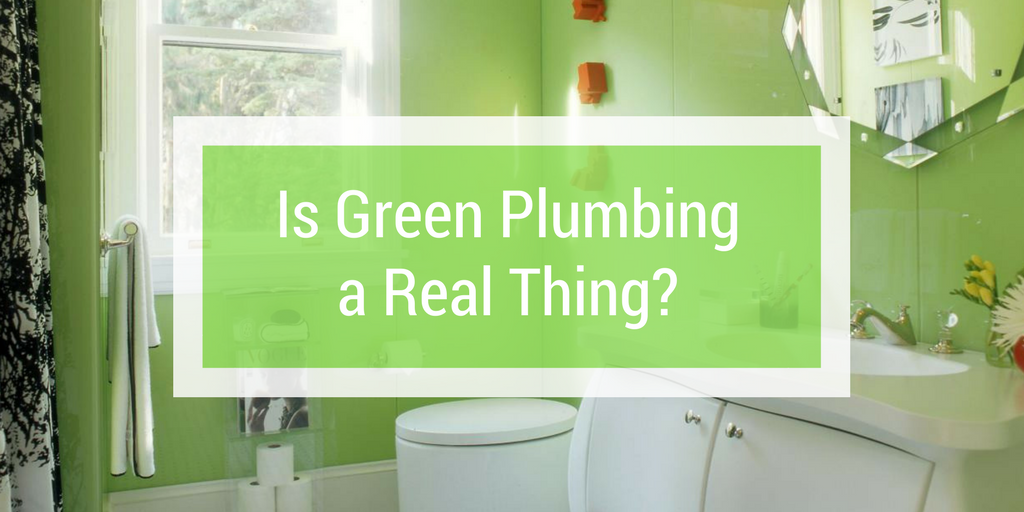Green plumbing technologies aid in creating a more sustainable way of life. Californians in the Bay Area have legitimate concerns about managing water usage.
The amount of rainfall and the availability of water is just one part of the equation when it comes to sustainability and green technology. It takes energy to move water, heat it, handle drainage, and process and dispose of sewage. Reducing water consumption has the added benefit of reducing the use of fossil fuels that impact the environment as a whole.
The Impact of Green Plumbing:
It is estimated that the latest generation of green plumbing technologies could reduce your water usage by at least 30 percent, saving you money while helping to prevent a staggering 91 million tons of carbon monoxide from being released into the atmosphere annually.
Energy Saving Products and Technologies
Toilets
Toilets use more water than any other household activity—up to 26 percent of total water usage. There are two types of toilets that can significantly reduce water consumption: low-flush toilets and dual-flush toilets.
Older toilets require 5 gallons of water to refill after flushing; low-flush toilets require only 1.6 gallons, at a savings of 70 percent. They are also more powerful, fill sooner, and are generally quieter than old school toilets. Dual-flush toilets give you the option of pressing one button that will use less water for flushing liquid waste, and a second button that will supply more water for solid waste.
Laundry
Laundry consumes 22 percent of home water usage. Using a front-loading machine is an effective way to reduce the amount of water needed to wash a load, but further water savings can be achieved by washing large, full loads, rather than several small or medium loads. Additionally, purchasing Energy-Star-approved appliances is important to overall reduction of energy usage.
Showers
Showers use an estimated 17 percent of household water. The use of low-flow showerheads reduces water usage from 5 to 8 gallons per minute to a range of 1.6 to 2.5 gpm. Water pressure can vary, even among households within the same community, but the latest generation of low-flow showerheads will deliver the right amount of water flow for the pressure in your home, which will save not just on the amount of water usage but on the energy to heat that water.
Faucets
Doing dishes, brushing your teeth, washing your hands, shaving; these activities use about 16 percent of household water. Green plumbing technologies include tankless hot water heaters that provide on-demand, limitless water, and faucets with sensors for auto shutoff.
Leaks
Lack of timely maintenance is responsible for about 14 percent of household water usage, including leaking faucets, pipes, outdoor irrigation systems, or other similar problem. An evaluation of your home plumbing system can reveal any of these issues and lead to reducing your home water usage by hundreds of gallons of water per year.
Water Heating Technologies
Tank Gas Water Heaters
This is the most common and, unfortunately, at 62 percent, one of the least efficient methods of heating water, although the newest models offer greatly improved efficiency. Their simple design makes these hot water heaters less expensive, but they have a limited capacity and waste energy through having to maintain water temperature while the system is not in use. Energy smart hot water heaters make a difference in your energy bill – and the environment.
Tankless Gas Water Heaters
Tankless hot water heaters provide endless, on-demand hot water, take up very little space in the home, and use much less energy. The latest generation of tankless hot water heaters are better than ever, and function with your smart home management system.
Solar Water Heating
This is most cost- and energy-efficient method of heating water—once solar panels are installed. Most systems have a back-up for long periods without sun.
Energy-Saving Technologies and Lifestyle Changes Go Hand-in-Hand
An energy savings calculator can help you manage your home systems. Heating and cooling account for about half of the cost of your energy bill. High-efficiency systems can help you reduce your bills without sacrificing comfort. Some easy ways to reduce energy use that can be implemented immediately include:
- Plugging devices (lamps, computers, etc.) into power strips and turning them off when not in use can lead to significant savings in your electric bill.
- Unplugging any single, solid state appliances, such as a microwave or media unit when not in use, can deliver savings in the range of five dollars per month, per device. Remember, if it has a clock that is functioning 24/7, it is using energy.
Consider an upgrade to the latest green plumbing technologies, whether you are remodeling or in the process of building a new home. If you would like a consultation about the most effective green technologies for the plumbing system in your home, call Benjamin Franklin Plumbing Bay Area for help selecting the most effective energy saving products and technologies.


